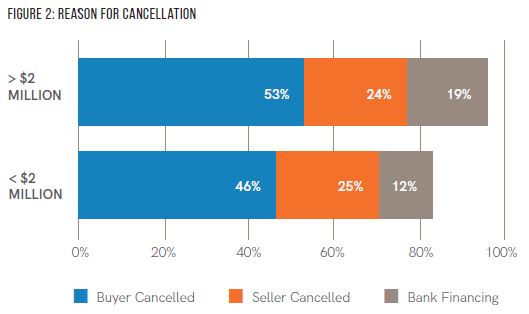Plan Your 2021 Comeback with a Strategic Acquisition
Business owners tend to think more seriously about selling when things aren’t as much fun as they used to be. Running a business in the COVID era is anything but fun, and owners are being particularly responsive to acquisition inquiries right now.
Proactive Acquisition Searches
When growing through acquisition, companies can be reactive or proactive. In a reactive strategy, the buyer takes phone calls and watches open market listings for appropriate opportunities to appear. This is a slow process, and buyers often settle for something “close enough” rather than an ideal fit. Proactive buyers work with M&A advisors to build proprietary deal flow. The advisor conducts a disciplined search that targets passive sellers, i.e. owners who would consider selling if the right opportunity came along, but who haven’t listed their businesses on the open market.
Current Supply and Demand
Companies in reactive acquisition mode may be surprised by the level of competition in the acquisition market. COVID has shaken business confidence which is why there are so few quality companies going to market right now. If fact, conditions are similar to the residential housing market. Too few sellers are listing, which means houses are selling fast, above asking prices. In the current M&A market, strong businesses (particularly those relatively unaffected by the pandemic) are finding that lack of supply to be working in their favor.
The Search Process
- In a proactive acquisition process, the critical first step is to define your strategy. An M&A advisor will drill into your business model, strengths and weaknesses, culture and revenue streams to help you define your ideal target. What sort of acquisition will create a “one plus one equals three” outcome for your business?
- From there, your M&A search team generates a list of potential targets. Typically this involves in-depth database searches as well as their own network sources. As a client, you review and approve this list before outreach begins.
- Next, your M&A team begins a disciplined outreach strategy to generate seller interest. The goal is to bring multiple opportunities to the table at the same time so you have choices and negotiating leverage. You’ll view executive summaries of each opportunity and move into management presentations with a short list of sellers. When the strategy is clear and response has been good, it can take 60 to 90 days to reach this point.
- Once you’ve identified your prime target, the next step is to negotiate a Letter of Intent (LOI) with the seller. An LOI is a written expression of a buyer and seller’s intent to enter into a transaction. The LOI includes non-binding terms such as purchase price, deal structure, indemnification, management arrangements, timeline, and key closing conditions. Completing an acquisition can be costly and time consuming, so you want to take time to carefully define LOI terms before you spend more time and resources on an acquisition. The LOI phase typically takes 2-4 weeks.
- At this point in the process, you have not yet done comprehensive due diligence. Due diligence can take another 60 to 90 days before investigations are completed and definitive agreement terms are settled.
All together, a proactive acquisition process often takes 5 to 8 months. Roughly half of that time is spent building and narrowing a pipeline of opportunities and the other half is spent in negotiations and due diligence.
The Takeaway
If acquisition is part of your 2021 growth plan, start now. Assemble your team, refine your strategy, and run a proactive acquisition process. Waiting around for deals to appear will likely produce limited choices, heavy competition and no results.
For more information on the acquisition search process or to discuss your acquisition strategy, confidentially, contact Al Statz, 707-781-8580 or alstatz@exitstrategiesgroup.com in our Sonoma County, California office. Exit Strategies Group is a partner of Cornerstone International Alliance.




 As a business owner selling your company, prospective buyers will perform due diligence on you and your company. But you should also conduct thorough due diligence on the prospective buyer.
As a business owner selling your company, prospective buyers will perform due diligence on you and your company. But you should also conduct thorough due diligence on the prospective buyer.




 As most companies transition from survival to rebuild mode in the second half of this year, some will become financially distressed and the owners will want to move on. Fortunately, for the shareholders and creditors of these companies, there is an active market for distressed business assets. Distressed businesses can be attractive acquisition targets for strategic buyers, and sellers can optimize financial outcomes through a proactive M&A sale process.
As most companies transition from survival to rebuild mode in the second half of this year, some will become financially distressed and the owners will want to move on. Fortunately, for the shareholders and creditors of these companies, there is an active market for distressed business assets. Distressed businesses can be attractive acquisition targets for strategic buyers, and sellers can optimize financial outcomes through a proactive M&A sale process.





